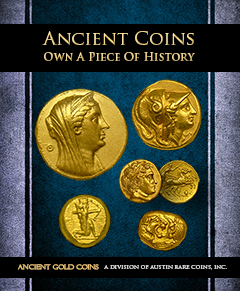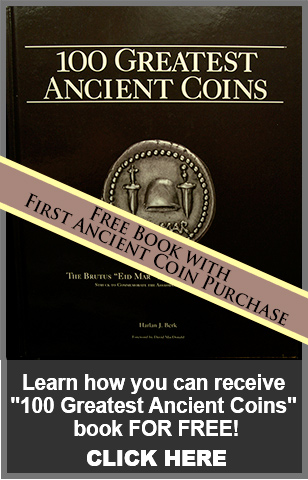About Ancients
Have you ever heard the saying, “Holding history in your hands? Perhaps it is best understood when you encounter a beautiful ancient coin. It allows you to take a journey in time to early roots of civilization, and many often wonder how something from 2,500 years ago could have survived in such incredible condition.
Coins are a tangible link to when currency, art and written language were in their infancy. Ancient coins were born at a time when the known world was filled with armies who were conquering vast territories and creating empires that spanned across hundreds of years. Their goal was to spread a lasting influence of culture, power, and religious belief.
Amazingly, some ancient coins feature designs that are far more intricate and detailed than our coinage today even though they were crudely made.
Ancient coins have a fascinating story and not only were used as currency, but as propaganda to broadcast messages across thousands of miles and diverse cultures. Since their primary intention was to facilitate commerce, most were used on a daily basis, hence worn down or lost forever. As a result of their extensive circulation, the great majority of survivors encountered today are heavily worn or corroded. You will only find the finest examples of Ancient Greek Coins, Ancient Egyptian Coins, Ancient Persian Coins, and Ancient Roman Coins that have been certified authentic by NGC and possess an extraordinary level of eye appeal, quality and value.
The earliest known ancient coins were made in Lydia, Asia Minor, between c.640 – c.630 BC, and consisted of electrum, a naturally occurring amalgam of gold and silver. Often the first coins ever used were given a certain worth, like aday or a months sustenance, and was certified by government authority. Its buying power could have been measured by a number of sheep, goats, or possibly a combination of jars of wine. In fact, before the invention of coins for trade, the oldest form of money was livestock and plant products, like sacks of grain. Later, shells used for jewelry, trading trinkets, obsidian, and various beads were used to trade. Coins essentially replaced barter trade as a payment for another’s goods. The introduction of coins gave instant recognition and made it much more convenient to transact business. Instead of trying to determine the value of the exchange it became easier to count the number of coins to ensure a fair trade.
Along with art and the written language, ancient coins and the concept of money became one of the most important inventions in the world. It allowed for people to trust a clearly identifiable object of value accepted as payment for goods and services. Soon important leaders adorned the obverse of coins and the reverse side used symbols of mythical gods, deities, and familiar plants and animals. Even today important leaders still adorn our coins as do religious references like the United Sates motto “IN GOD WE TRUST.”
If you are drawn to these magical Ancient coins of our storied past and want to find out more, talk to one of our Ancient coin specialist at Ancient Gold Coins, a division of Austin Rare Coins, Inc., Monday through Friday 9am to 5pm, at 1-800-550-6314.
Ancient Gold Coins & Ancient Silver Coins Hall of Fame Top Picks
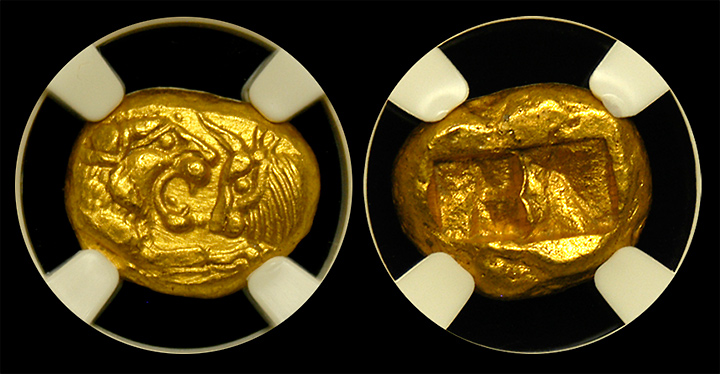
Lydia (Croesus or later) after c.561, Gold Stater - Light Series - Gem Mint State
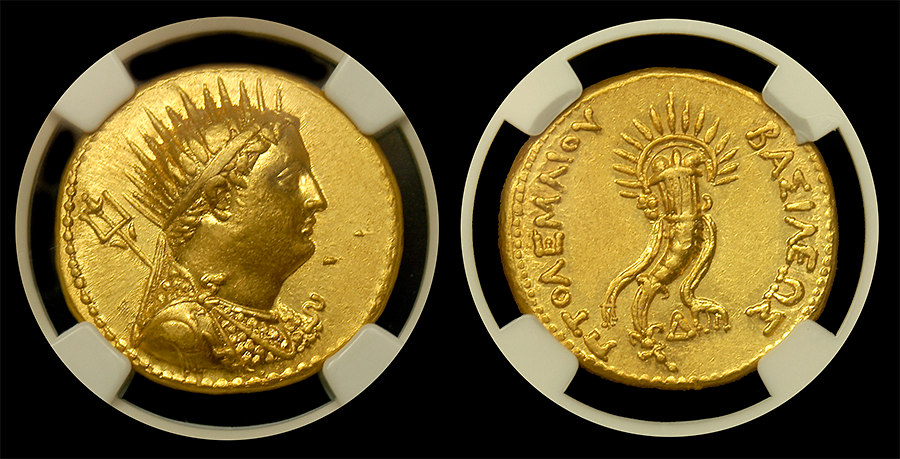
Ptolemaic Kingdom, Ptolemy III, 246-222 BC, Gold Octodrachm,
Posthumous under Ptol. IV - Choice Almost Uncirculated, Fine Style
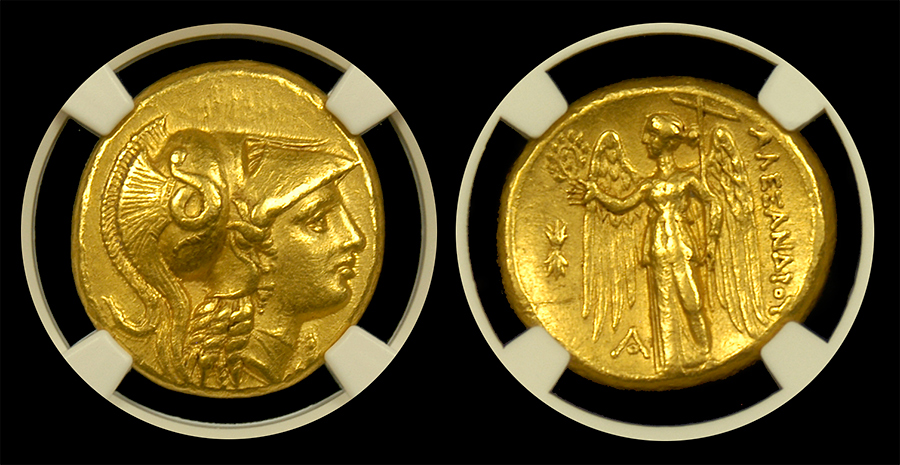
Kingdom of Macedon, Alexander III, 336-323 BC, Gold Distater,
Lifetime Issue - Almost Uncirculated Star, Fine Style
Visit Ancient Coins on Pinterest.

